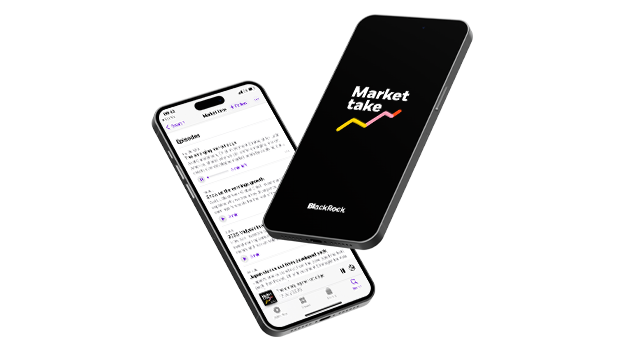Starting the tight policy unwind
Market take
Weekly video_20240916
Jean Boivin
Opening frame: What’s driving markets? Market take
Camera frame
The Federal Reserve is set to cut interest rates for the first time since the pandemic.
Yet it and other central banks are not heading for an easy policy stance.
Title slide: Starting the tight policy unwind
1: Why we don’t see recession ahead
An uptick in the unemployment rate has helped stoke recession fears. We see these fears as overdone.
Employment is still growing robustly. The unemployment rate is not rising due to layoffs, but because elevated immigration has expanded the workforce.
2: Recession pricing overdone
Markets are pricing Fed rate cuts as deep as those in past recessions. We think this is similarly overdone.
Once immigration normalizes, the economy will not be able to add jobs as quickly as it has been without stoking inflation.
This will keep the Fed from cutting as deep as in past cycles, we think.
3: ECB policy
The European Central Bank cut rates again last week.
We see euro area inflation falling to 2% and staying near there – giving the ECB more room than the Fed to cut rates.
Yet supply constraints make it unlikely inflation will go back to being well below 2% like it was before the pandemic. We see the ECB holding rates well above pre-pandemic levels.
Outro: Here’s our Market take
Short-term U.S. Treasury yields have slid on expectations for deep Fed rate cuts, so we went underweight.
We’re neutral euro area government bonds and UK gilts as market pricing of rate cuts is more aligned with our view or can go further.
Closing frame: Read details:
blackrock.com/weekly-commentary
Cutting, not easing
The Fed is set to cut interest rates for the first time since the pandemic. Yet central banks are not heading for an easy policy stance given sticky inflation.
Market backdrop
U.S. stocks rose about 4% last week, led by tech. U.S. 10-year Treasury yields touched 15-month lows, with markets pricing steep Fed cuts that look overdone.
Week ahead
The Fed policy meeting takes center stage this week. The recent drop in U.S. core CPI stalled in August, likely taking a 50-basis-point cut off the table, in our view.
The Federal Reserve is set to start rate cuts this week after its rapid hikes to rein in inflation. Markets expect the Fed to cut rates sharply – and we think this pricing is overdone. U.S. inflation has slowed as pandemic disruptions have faded and due to a temporary immigration boost to the workforce. We see inflation staying sticky due to loose fiscal policy and the impact of mega forces, limiting how far the Fed can cut. Yet we think recession fears are overdone and stay overweight U.S. stocks.
Market backdrop
U.S. stocks rose about 4% last week, rebounding from their largest weekly drop in 18 months, with tech helping lead the way as recession fears faded and on coming Fed rate cuts. U.S. 10-year Treasury yields touched 15-month lows, settling near 3.66% with markets pricing in 200 basis points of Fed cuts by next June. We think this is overdone and could set up more sharp pricing shifts as markets see-saw between starkly different potential outcomes.
Central bank policy meetings take center stage this week, headlined by the Fed. We expect the Fed to cut rates for the first time since its rapid hikes launched in 2022. Yet the recent drop in U.S. core CPI stalled in August, likely taking a 50-basis-point cut off the table, in our view. The BOJ will also be in focus after being a source of market volatility after its last meeting in late July.
Week ahead

Past performance is not a reliable indicator of current or future results. Indexes are unmanaged and do not account for fees. It is not possible to invest directly in an index. Sources: BlackRock Investment Institute, with data from LSEG Datastream as of Sept. 12, 2024. Notes: The two ends of the bars show the lowest and highest returns at any point year to date, and the dots represent current year-to-date returns. Emerging market (EM), high yield and global corporate investment grade (IG) returns are denominated in U.S. dollars, and the rest in local currencies. Indexes or prices used are: spot Brent crude, ICE U.S. Dollar Index (DXY), spot gold, MSCI Emerging Markets Index, MSCI Europe Index, LSEG Datastream 10-year benchmark government bond index (U.S., Germany and Italy), Bank of America Merrill Lynch Global High Yield Index, J.P. Morgan EMBI Index, Bank of America Merrill Lynch Global Broad Corporate Index and MSCI USA Index.
Sept. 18
Fed policy decision; UK CPI; Japan trade data
Sept. 19
Bank of England policy decision; Philly Fed business index
Sept. 20
Bank of Japan policy decision; Japan CPI; euro area consumer confidence
Read our past weekly market commentaries here.
On the go?
Stay informed on our latest weekly Market take. Listen wherever you get your podcasts.

Authors





